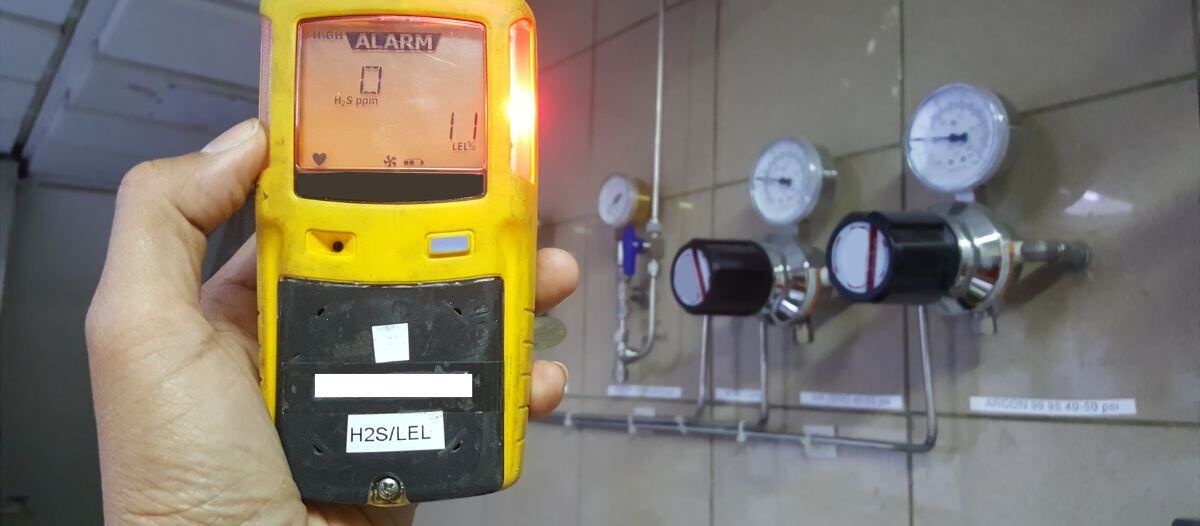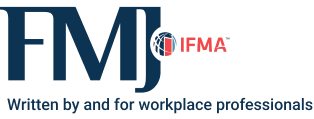Safeguarding Facilities & Achieving Compliance
Knowing natural gas leak detection laws

Natural gas is a cornerstone of global energy infrastructure, powering homes, businesses and essential services. However, leaks pose inherent safety and environmental risks. To mitigate these risks, various international, national and local regulations mandate stringent natural gas leak detection and prevention measures.
The regulatory landscape
International natural gas regulations are tightening, and this trend extends beyond the initial focus on curbing pipeline leaks and emissions. Policymakers are increasingly targeting buildings and facilities, resulting in a rise in proposed legislation focused on natural gas safety within buildings, suggesting stricter regulations may be on the horizon in the coming years.
United States
Under the U.S. Department of Transportation, the Pipeline and Hazardous Materials Safety Administration (PHMSA) spearheads natural gas safety in the United States and enforces comprehensive regulations encompassing pipeline design, construction, operation, maintenance and emergency response. Leak detection is a critical component, requiring operators to promptly identify and repair leaks to protect the public and the environment. This ensures natural gas is safely transmitted before reaching buildings and other facilities.
State and local regulations: Many states have additional, stricter regulations tailored to their specific needs, particularly to ensure safety within buildings. California, for instance, has stringent environmental regulations enforced by the California Public Utilities Commission (CPUC). CPUC mandates leak detection programs that not only meet federal standards but also address challenges like seismic activity and urban density. These programs can involve more frequent inspections, using advanced technologies to detect leaks, or even replacing aging infrastructure.
Similarly, some cities have enacted their own laws with similar aims. New York City Local Law 157, for example, mandates the installation of natural gas detectors in specific building types to enhance public safety. These building types include all private dwellings and Class A and B multiple dwellings. Class A multiple dwellings are one- and two-family homes, while Class B multiple dwellings encompass hotels, lodging houses and dormitories. The law requires the installation of natural gas detectors that meet the standards outlined in NFPA 715-2023 within these covered buildings.
The detectors must be strategically placed within one foot of the ceiling and at least three feet, but no more than 10 feet, from all gas-burning appliances. The law allows for detectors to be hardwired, plugged into a constant power source, battery-powered or installed as part of a wireless monitored building management system, offering flexibility for different configurations and building management needs. Building owners in New York City have until May 1, 2025, to ensure their properties comply with Local Law 157 by installing the mandated natural gas detectors.
International standards
Internationally, natural gas safety standards vary. The European Union (EU) has directives like the Gas Appliances Directive (GAD) and Pressure Equipment Directive (PED) that establish safety requirements for gas appliances, equipment and installations. These directives aim to ensure leak prevention and safety throughout a product's lifespan. For instance, the GAD mandates that gas appliances undergo rigorous testing and certification to ensure they meet strict leak prevention and detection standards before being placed on the EU market. This not only protects consumers but also minimizes the risk of leaks within the gas distribution network.
Canada provides another example of a robust regulatory framework. The Canadian Standards Association (CSA) establishes national standards for natural gas piping and equipment, covering everything from material selection and installation practices to leak detection and repair procedures. Compliance with CSA standards is mandatory for most gas installations in Canada, ensuring a consistent level of safety across the country.
LoRaWAN: A powerful solution for leak detection
Recent technological advancements have revolutionized gas leak detection. LoRaWAN (long-range wide-area network) technology, for example, offers a transformative solution for enhanced safety, operational efficiency and regulatory compliance.
Understanding LoRaWAN
LoRaWAN is a low-power wireless communication protocol facilitating secure, bidirectional communication between remote sensors and gateways. It operates on unlicensed radio frequencies in the industrial, scientific and medical (ISM) bands, enabling long-range connectivity that supports a majority of natural gas safety use cases. Its propagation characteristics support methane detection indoors by enabling sensor readings through building materials or in hard-to-reach areas such as basements, all with minimal power consumption. This makes it ideal for applications requiring extensive coverage and long battery life and perfect for gas leak detection across vast areas and inside buildings.
A typical LoRaWAN solution comprises three key components:
-
Devices: These battery-powered sensors are deployed at strategic locations along pipelines or within facilities to detect the presence of methane, the primary component of natural gas. Outdoor methane sensors placed on or near infrastructure and LoRaWAN-enabled residential methane detectors (RMDs) for indoor use are highly sensitive and can identify leaks promptly. Some companies offer residential natural gas alarms that seamlessly integrate with a LoRaWAN network as part of a monitored building management system. These devices meet strict manufacturing and testing requirements, are UL compliant, and have been tested and validated by leading industry organizations like the Fire & Risk Alliance and the Gas Technology Institute (GTI).
-
Network: Gateways act as communication relays, receiving data from end devices and transmitting it to the network for delivery to user applications. Gateways are placed throughout an area at a density that ensures data from devices reach them, whether installed every few floors within a building to ensure signals penetrate the surrounding materials or at elevated locations to maximize outdoor network coverage. Because of the critical nature of the infrastructure and environment being monitored, many facility management and operational professionals partner with a network operator to ensure the delivery of secure, carrier-grade wireless network service.
-
Applications: Building management platforms and other FM applications are used to compile and visualize LoRaWAN and other sensor information, providing FMs with new insights into the building environment. Automated data collection, visualization, alerting and reporting through a centralized platform allows building owners and FMs to uncover critical operational issues that must be addressed and help maintain compliance with safety and insurance regulations in a single location or across a portfolio of properties.
Benefits of LoRaWAN for gas leak detection:
-
Remote monitoring: LoRaWAN-connected sensors enable automated and continuous monitoring within and outside of facilities, promptly detecting leaks and triggering alerts for rapid response. The sensors can relay the leak information within seconds, minimizing potential safety hazards and providing less costly mitigation.
-
Cost-effectiveness: A key aspect of LoRaWAN's cost-effectiveness is the low cost of the wireless network infrastructure, including affordable gateways and their easy, low-cost deployment. The long-range characteristics of LoRaWAN enable the monitoring of thousands of sensors over extended distances with just a few gateways, which is crucial for cost-efficiency in scaled deployments. Additionally, LoRaWAN sensors consume low power, providing extended battery life that can exceed 10 years, further minimizing maintenance expenses. The sensors themselves are competitively priced, making them ideal for budget-conscious implementations. This all leads to easier installation within buildings and the ability to monitor gas leaks outside, whether emanating from inside the building or the distribution network, in a way that would otherwise be cost-prohibitive.
-
Scalability and flexibility: The ability to easily add gateways to expand coverage areas and support a growing number of connected devices is a critical advantage of LoRaWAN, enabling seamless network growth and densification regardless of location. Public and private LoRaWAN network deployment options also offer a level of flexibility not found with other wireless technologies, providing FMs with choices to best meet varying business models.
-
Enhanced regulatory compliance: Continuous monitoring and immediate leak detection capabilities of LoRaWAN systems facilitate compliance with stringent regulatory requirements. The data provided by systems utilizing LoRaWAN technology allows FMs to demonstrate continuous compliance with local environmental regulations and avoid potential fines or penalties.
-
Sustainability: Methane is a powerful greenhouse gas, with Global Warming Potential about 80 times greater than that of carbon dioxide during the 20 years after it is released into the atmosphere, according to the United Nations. When it is released, it creates poor air quality, ground-level ozone pollution and explosion hazards. When LoRaWAN systems are used at scale across cities, countries and the infrastructure within them, the environmental benefits of mitigating methane using those systems will contribute to preserving the environment and air quality and reducing hazards that have disastrous consequences to the surrounding environment.
Considerations & the future
Leak detection systems will continue to add intelligence, improve how data is collected and analyzed to further optimize operations and preemptively address potential risks. As these systems continue to mature, they will offer greater leak detection and proactive maintenance possibilities, minimizing downtime, enhancing overall safety, and providing faster response times that mitigate the potential consequences of a leak.
While LoRaWAN offers compelling advantages, implementation requires careful planning. Carrier-grade network services, data security and interoperability with existing infrastructure are crucial considerations. Robust cybersecurity measures and compatibility with legacy systems are also essential for safeguarding sensitive data.
Navigating the complex web of natural gas leak detection regulations can be daunting. However, with a solid understanding of regulatory requirements and the transformative power of LoRaWAN technology, facility managers and utility providers can proactively safeguard their natural gas infrastructure, ensure public safety and achieve environmental responsibility.

Tom Wainman brings close to 30 years of wireless technology experience to the Netmore Group. Prior to Netmore, Wainman enjoyed a history of driving growth and incremental market share in Fortune 500 companies with Nextel, Sprint and AT&T. He took his wireless carrier knowledge to the largest wireless infrastructure provider, American Tower, where he was very successful in securing long term wireless infrastructure agreements with large public venues, convention centers, arenas, racetracks, casinos, malls and hotels to design, deploy, and maintain neutral host distributed antenna systems. He is a graduate of Providence College. Prior to jumping into wireless technology, Wainman was CH-47 pilot in the U.S. Army, a small business owner, actor and real estate professional specializing in Section 1031 Tax Deferred Exchanges.
References
ul.com/news/safer-gas-safer-future-understanding-transition-gas-appliance-directive-gas-appliance
single-market-economy.ec.europa.eu/sectors/pressure-equipment-and-gas-appliances/pressure-equipment-sector/pressure-equipment-directive_en
csagroup.org/store/petroleum-and-natural-gas/
Read more on Operations & Maintenance , Real Estate and Risk Management
Explore All FMJ Topics









